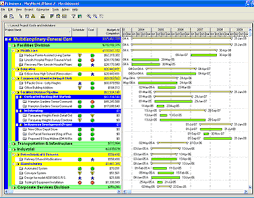While using primavera p6, the scheduling process is divided into four main parts or steps:
Plan, update, review/ analyze and communicate.
In the first part we would focus on how to plan. It is very important to understand the contract and requirements given by the customer. It is very important for the scheduler as it may help in scheduling the updates. The documents should be well versed and capable of outlining the frequency which may refer to updates versus revisions, earned value requirements, cost and resource status requirements. it may also refer to change management procedures. These documents require specific software to be used.
Policies of the company, budgeting constraints for the project at hand and usage of application are the few important factors responsible for schedule update occurrence. When you maintain your record more frequently, get data of the built programs or data which is based on required periodic performance updates helps to figure out things more accurately and the people working on projects can work more effectively. It establishes greater accuracy, promotes timely issues/resolutions.
The starting point to which it can get back when some error or exception occurs during the update process.
In which the usage of layouts and reporting tools as well as predefined filters helps you enhance the functionality. These filters are based on standard rolling date as well as the scheduling data dates. Regular updates should be taken, in order to effectively record project progress consideration. Internal policies of the company, budgeting constraints for the project at hand and usage of application are the few important factors responsible for schedule update occurrence.



